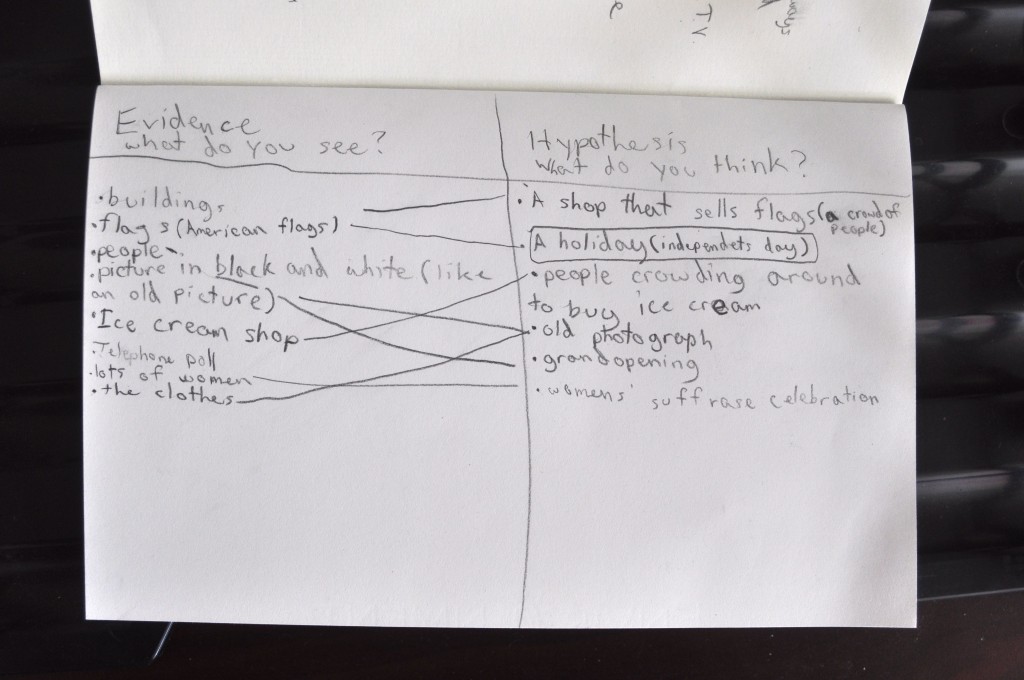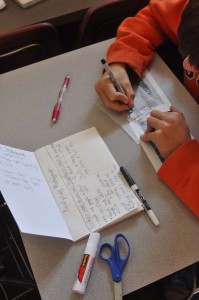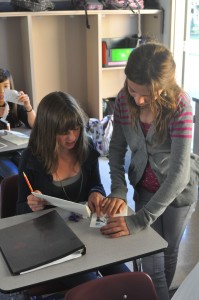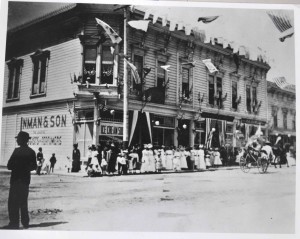
EVIDENCE – What do you SEE? What do you NOTICE? In one column students were asked to create a list of observations while looking at this historical photo.
“a building” “it’s in black and white” “the sillouette of a man”
“an ice cream shop” “American flags” “a horse and carriage”
“a crowd of people”
In the next column they were asked to answer the question, What do you THINK? This was their HYPOTHESIS about the photo. The students defined hypothesis from their knowledge of science class – “an educated guess,” meaning they had to provide evidence for their theories.
At least someone in all 10 classes guessed the 4th of July, which is what this photo represents, from the year 1898! Next, students got to see the contemporary photo of the same location taken just a few weeks ago. They compared and contrasted the two photos, describing what has changed and what has stayed the same.
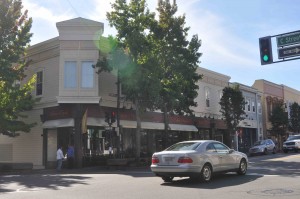
“There are cars and stop-lights in modern times and in 1898 you traveled with a horse and carriage.”
” I think there’s something the same about the architecture of the building – the window on the edge is popping out.”
Then students started to make personal connections and someone yelled out, “Wait, that’s 4th Street and C Street!” “Oh yeah- That’s Sabor of Spain!” “I’ve been there!” Ah Ha, the moment of discovery! Students begin to use clues from the knowledge they have outside of school.
Next students created a layered artwork using historical and contemporary photos of San Rafael. They traced contour lines of either the past or the present and overlapped it on the image they didn’t trace.
This action created a conversation or visual relationship between the two time periods, allowing students to see what had changed and what had stayed the same, but also thinking about the layers of history. These layers of history are similar to the layers of of a painting. 
Students reflected on their arts-process and discussed how it made connections to what they were studying in history.
Historical Thinking Lesson Plan, PDF created by Brooke Toczylowski.

